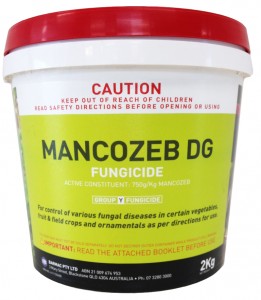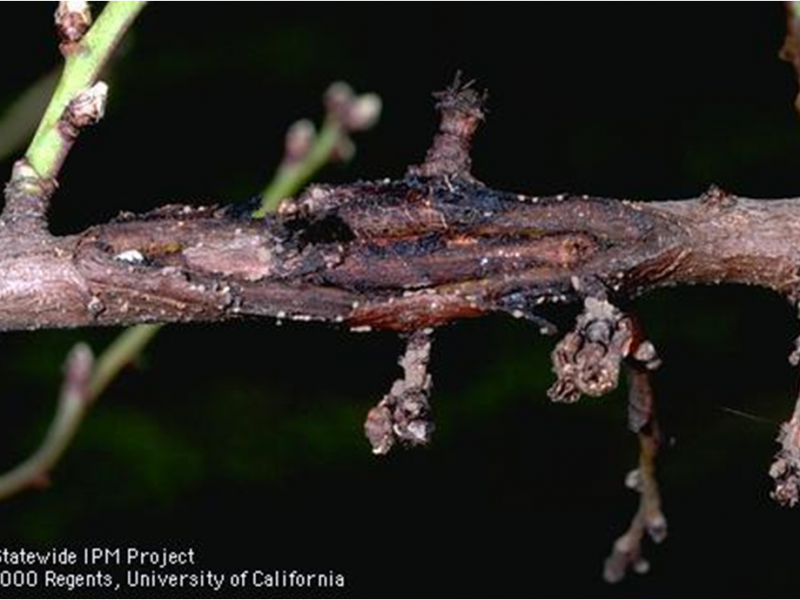
Brown Rot in Almonds
Brown Rot in Almonds is caused by the fungus Monilinia spp. Young blossom spurs and associated leaves collapse to form shoot blight. Gum may exude at the base of infected flowers. Cankers on blighted twigs have tan centers with dark margins. At high humidity, gray to tan spore masses form on diseased flower parts and twig cankers. Flowers may become infected from pink bud to petal fall and are most susceptible when fully open. In almonds, stigma, anthers, and petals are all very susceptible to infection. The fungus survives in twig cankers and on remaining diseased flower parts and spurs. Spore pads (sporodochia) appear on these structures in late winter to provide inoculum for spring infection. Spores are airborne or rain splashed. Infection is favored by rainy weather but can also occur in dry years with high humidity.
How to control Brown Rot in Almonds
Mancozeb DG

Mancozeb DG is a dry flowable preventative fungicide formulation for the control of certain fungal diseases in ornamentals and turf. Economical crop… Read More
Read more